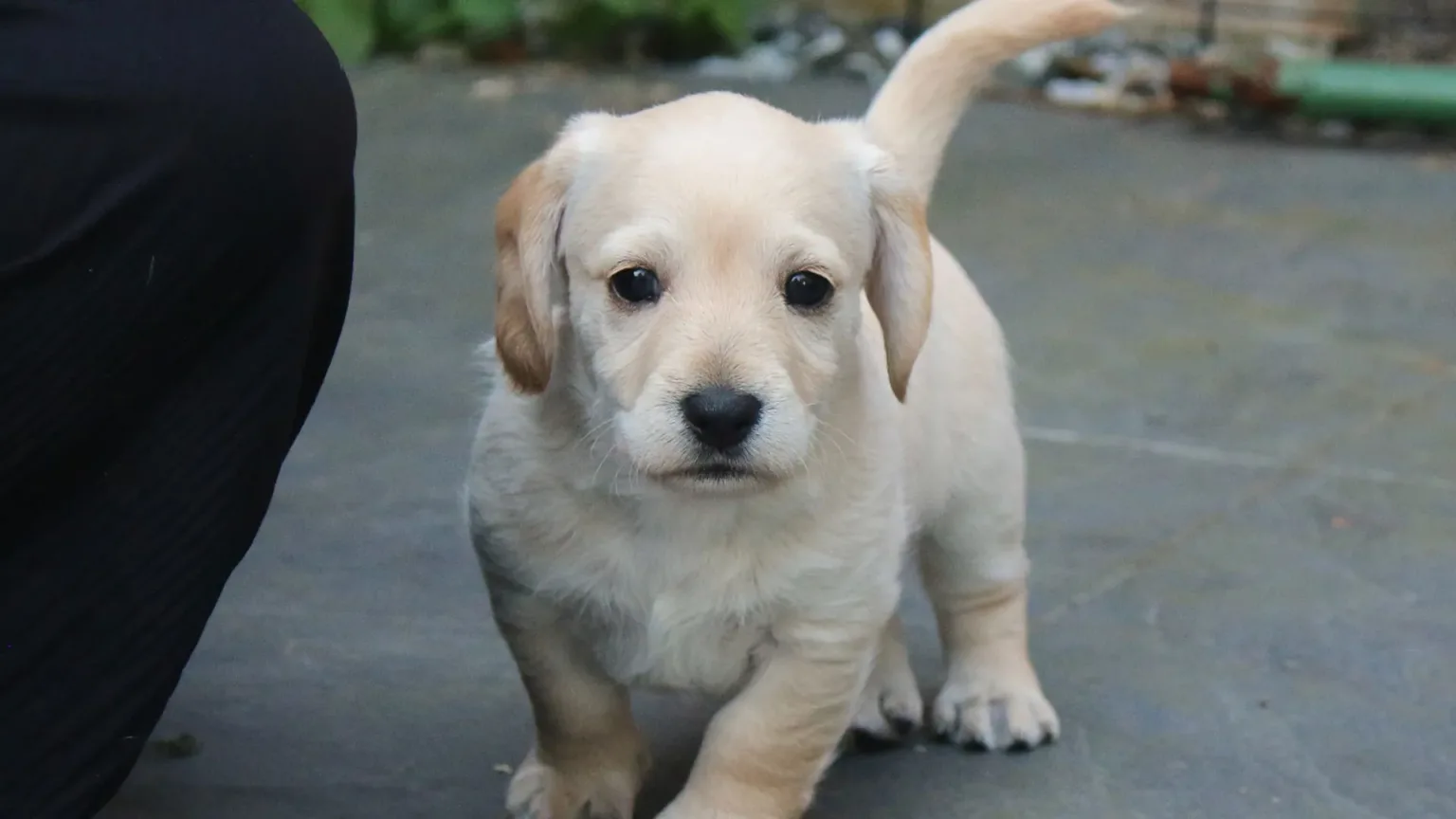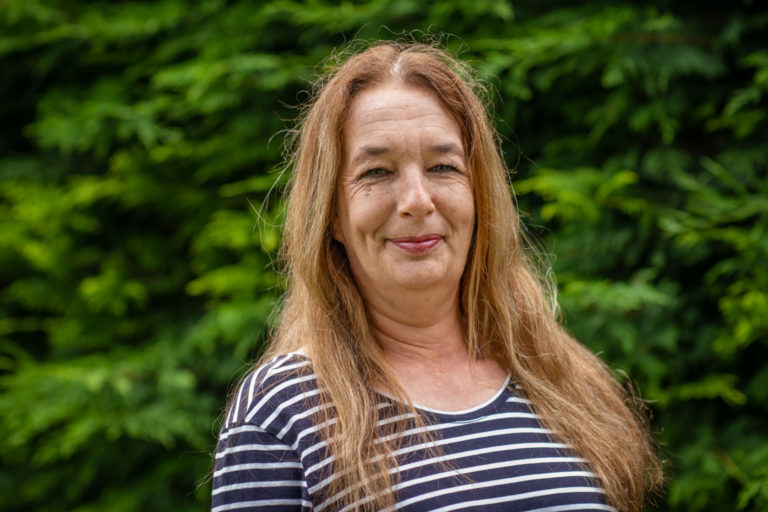When it comes to pets, we've all got questions
Ever feel like your pet is from another planet?

Woodgreen’s behaviour and training specialist, Sue Ketland, delves into the reality of puppyhood, explaining the highs and lows of getting a puppy and shares her top tips.

Getting a puppy is incredibly rewarding, but it doesn’t come without challenges. Sue joined Woodgreen over 30 years ago and has worked with thousands of dogs and their owners. Here are some questions Sue is regularly asked about raising puppies:
Dogs are a social species with a similar range of emotions to us. When you first bring a puppy home, don’t shut them away by themselves overnight as they’re likely to be very scared and cry for reassurance. Puppies won’t have been taught that it’s okay to be alone and shutting them away will feel like a punishment.
Remember, company makes for a contented puppy. So for the first few nights, your puppy should sleep where you sleep. This can either be in your bedroom, or you could camp downstairs with them if you prefer. Our advice is to keep them in a puppy play pen to give them a secure, cosy space. They’re likely to sleep much better knowing their most trusted person is nearby, giving you a better night’s sleep too. You can then gradually wean yourself away at night when they’re not as scared.
For most dogs, house training is relatively straightforward. Consistency is key. Your puppy is likely to need the toilet after eating and sleeping, so encourage them out into the garden after every meal and nap (even if they’ve only been asleep for 10 minutes!). Look out for them sniffing, circling or wandering towards the back door as this could mean they need to go. If you’re struggling, keep a toilet diary. This will help you predict when they might need the toilet, so you can make sure your puppy is in the right place at the right time.
We wouldn’t recommend puppy pads, we find this teaches them it’s okay to toilet indoors and it adds another step into the process. Puppies associate where they’re standing with where they go to the toilet, this is called ‘substrate association’. For example, we want our dogs to know that they have to stand on the grass to go to the toilet. Since puppy pads were introduced, we’ve heard of more dogs toileting on soft surfaces like rugs and duvets. This isn’t ideal, but remember you should never punish a puppy for going to the toilet, regardless of where it is.
At Woodgreen, we’re big supporters of crate training! It can be extremely valuable to have a dog who is comfortable in a crate. This can be very useful when travelling in the car, or if they need to stay at the vets. Don’t feel like this has to be done as soon as you bring your puppy home. There’s no pressure – start when the time is right for you and your puppy.
Socialisation is key to a puppy’s development, but introductions should be slow and calm. You should always be on your guard if people approach your puppy to say hello. For shy puppies in particular, spontaneous attention from strangers could make your dog fearful of others later in their life. Confident puppies on the other hand may lavish all the fuss, and your dog may end up being more interested in other people than you.
You should teach your puppy to accept things they may encounter outside including traffic and livestock. This is called ‘habituation’ and it’s just as important as socialisation. It’s a good idea to habituate your puppy to other dogs and people too, that way they’ll know to check in with you for a treat rather than chasing after everyone and everything.
Puppies have sharp little gnashers and since they explore the world through their mouth, it can be quite tricky for owners. Mouthing is very normal and puppies do grow out of it. Keep offering them plenty of toys and they’ll soon learn there are more appropriate things to take their frustration out on. Make sure there’s always a reward for them when they get it right.
If distraction isn’t working, leave them in the room or take them to their puppy pen for a minute or two. This will let them know you won’t play when they’re behaving that way. For the ankle biters who grab slippers or tug on trouser legs, we advise owners to wear house wellies – yes really! This way your puppy won’t be able to hurt you, so stand perfectly still and they’ll soon realise that it’s boring.
The most challenging time for mouthing is the week or two before their final vaccination. By this point, they will have got used to your house and might need something new to keep them excited. Now’s a good time to start training and introduce them to scent games. From around 12 weeks when they’re teething, try giving them some frozen carrots and frozen rubber toys to soothe their inflamed gums. You can also freeze a knotted flannel or tea towel for them to chew.
Puppies chew. It’s what they do! So it’s a case of preventing them from grabbing things in their reach. It’s a good idea to have a tidy up and puppy-proof your home. If you have children, ask them to crawl around at your puppy’s level and move things that might be in their line of sight. Keep all valuable items out of reach, especially when they’re training and make sure you don’t leave any potentially harmful foods on the coffee table like grapes or chocolate. If like me you’re not a naturally tidy person, one of my tricks is to ‘hidey up’ rather than tidy up – keep a lidded plastic box in every room and pop any loose items in there.
During times when you can’t keep an eye on your puppy, keep them inside a puppy pen with an open crate, water, some toys and enrichment feeders to keep them busy. We recommend Kongs, LickiMats or homemade alternatives like stuffed toilet roll tubes. Your puppy will be able to see you while you get on with what you need to. And you’ll know they’re safe. It’s worth rotating their toys to keep them interested – puppies can get bored very quickly.
The trick is to add, never take away. By taking your dog’s food bowl away and giving it straight back, you’re likely to upset them. A good idea is to put half of your puppy’s food in the bowl, then call their name as they’re eating and add more to the bowl. They will learn that when a hand comes down, more food comes and there’s nothing to be wary of.
Puppies are likely to steal items from around the house too. Even if you’re tidy, they’ll get hold of something like a sock or a dropped tissue. If you react loudly and chase them to get the item back, they’ll think that’s a game. You might get away with taking things out of a puppy’s mouth, but when they’re a bit older they’re likely to tell you to stop. If the item they’ve stolen is completely harmless, like a tissue, ignore it and don’t add any value to it. If it’s something you need to get back, swap it with something better like a toy or a treat.
It’s very common for puppies to get the ‘zoomies’, or have a ‘mad half an hour’, usually later in the day after they’ve eaten. Some people find this quite worrying, as their angelic puppy is now a whirlwind of energy, ricocheting off the furniture and nipping their ankles! In most cases, it’s caused by having excess energy or being over-stimulated. They will usually tire themselves out quite quickly, and they should grow out of it.
For many puppies, their first experience in the car will be leaving the breeder and going home, followed by trips to the vets for their vaccinations. If this is the case, they might associate the car with stressful or painful things. Take it slowly, with short trips to fun places – like driving to the local park for a gentle walk. Start with your puppy in the front of the car as it’s more stable, and they’re less likely to be bounced around. Seeing scenery whizzing by can make dogs feel travel sick, so a covered and secured crate can make them feel more settled. Legally, your dog has to be safely restrained in the car.
If you have a puppy, or thinking about getting one, please come along to our free monthly ‘Reality of Puppyhood’ online event. Find out more and sign up at our events page.